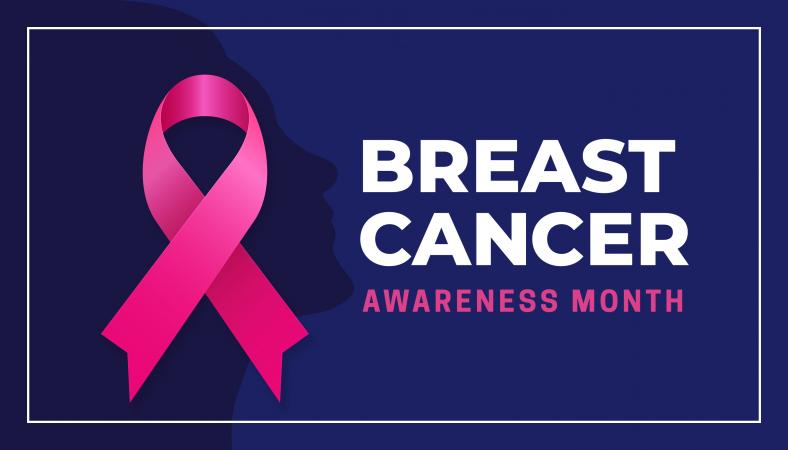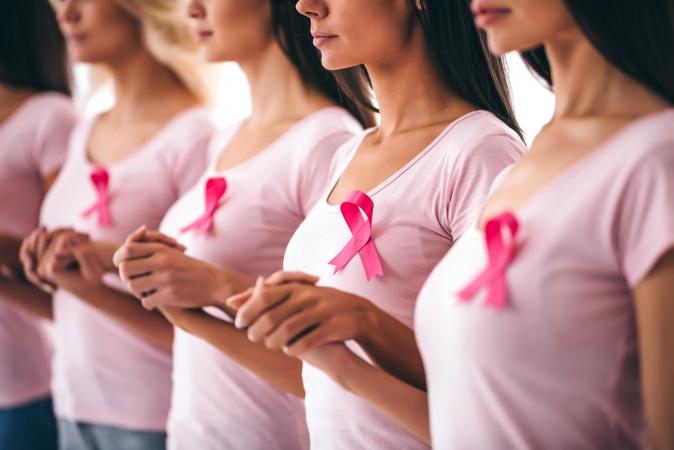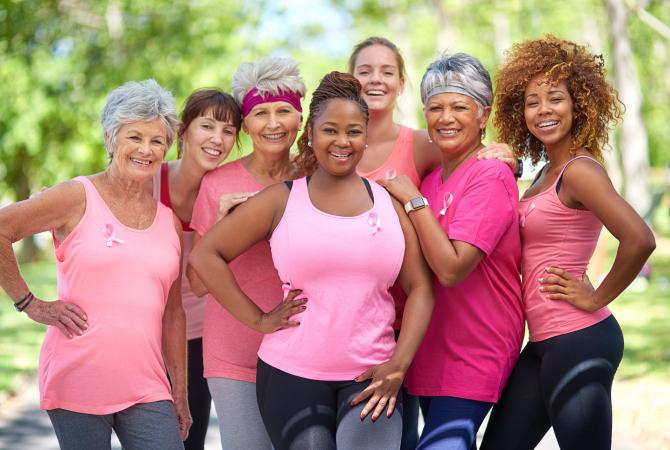Knowledge & News on Women: Breast Cancer Awareness Month
Breast Cancer Awareness Month
October is Breast Cancer Awareness month! Our goal throughout the month is to increase awareness of the disease and stress the importance of mammograms as the best tool to screen for breast cancer, the second most common type of cancer among women. Approximately one in eight women in the United States will get breast cancer during their lifetime and each year, more than 40,000 women die from breast cancer.
Signs and Symptoms of Breast Cancer
Different people have different symptoms of breast cancer, while some do not have any signs or symptoms at all. It is important to know how your breasts normally look and feel to be able to recognize any changes that may occur. While knowing what to look for is important, regular mammograms and clinical breast exams are crucial, as these tests can help detect breast cancer before symptoms show.
Signs of breast cancer may include:
- Lump in the breast or underarm (armpit)
- Swelling or thickening of all or part of the breast
- Dimpling or skin irritation of breast skin
- Redness, scaliness or thickening of the nipple or breast skin
- Nipple discharge (other than breast milk)
- Any change in the size or shape of the breast
- Pain in any area of the breast
Get Screened
A mammogram is a low-dose x-ray picture of the breast. Early detection of breast cancer can improve a woman’s chance of survival and mammograms are the best tool to find breast cancer early, when it is easier to treat and before it is big enough to feel or cause symptoms. Women should ask their healthcare provider if and when a mammogram is right for them.
How Can I Lower My Risk?
There are many factors that can influence your breast cancer risk such as family history and getting older. There is no sure way to prevent breast cancer, but lifestyle changes can help lower your risk of breast cancer such as:
- Keep a healthy weight and exercise regularly.
- Choose not to drink alcohol, or drink alcohol in moderation.
- If you are taking hormone replacement therapy or birth control pills, ask your doctor about the risks.
- Breastfeed your children, if possible.
- If you have a family history of breast cancer, be sure to talk to your doctor about ways to lower your risk.
Learn more about breast cancer, its symptoms, risk factors, mammograms, diagnosis, and treatment for breast cancer.
Pink Ribbon Guide
A pink ribbon symbolizes breast cancer awareness. The FDA Office of Women’s Health launched the Pink Ribbon Sunday Mammography Awareness Program in 1998 to educate women about early detection of breast cancer through mammography. Pink Ribbon Sunday originally targeted African American and Hispanic churches. Over the years, the program’s outreach has expanded to connect with as many women as possible. Pink Ribbon events help educate women about the importance of mammograms and encourage them to take charge of their breast health by getting regular mammography screenings. We are pleased to share our updated mammography resource, Pink Ribbon Guide: Mammography Matters.
Take Action
This month and every month, there are many ways you can join the fight to save lives against breast cancer. Many women do not get their recommended mammography screenings due to fear, time, lack of knowledge about mammograms or concerns about cost. The Pink Ribbon Guide shares ways you can help make a difference including distributing reliable health information, providing emotional support and connecting women to local resources. In the guide, you will find:
- Basic facts about mammography
- Information on how to host an in-person or virtual event
- A customizable flyer and postcard to promote your event
- Resources on mammography and breast cancer
Search for a certified mammography facility in your area.
The Centers for Disease Control and Prevention (CDC) offers free or low-cost mammograms. Find out if you qualify.
Additional Resources
Check out these resources from our office and federal partners:
- Get the Facts About Mammograms
- Mammography: What You Need to Know
- Get Other FDA Publications for Women
- For Women Homepage
- NCI Breast Cancer
- National Cancer Institute
For resources and materials on other women’s health topics, visit www.fda.gov/womens.



